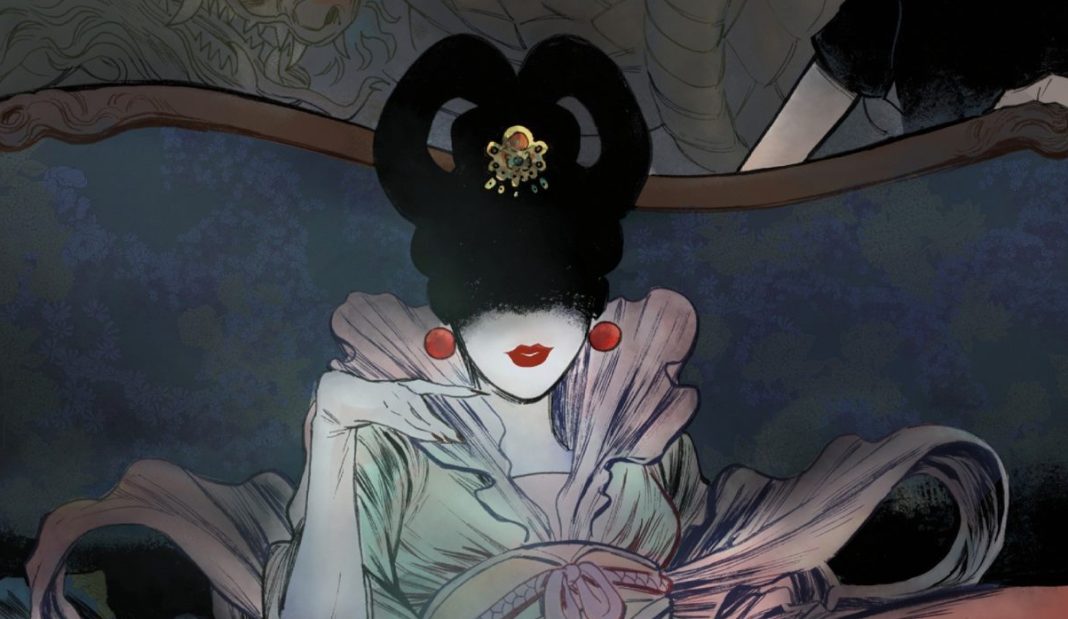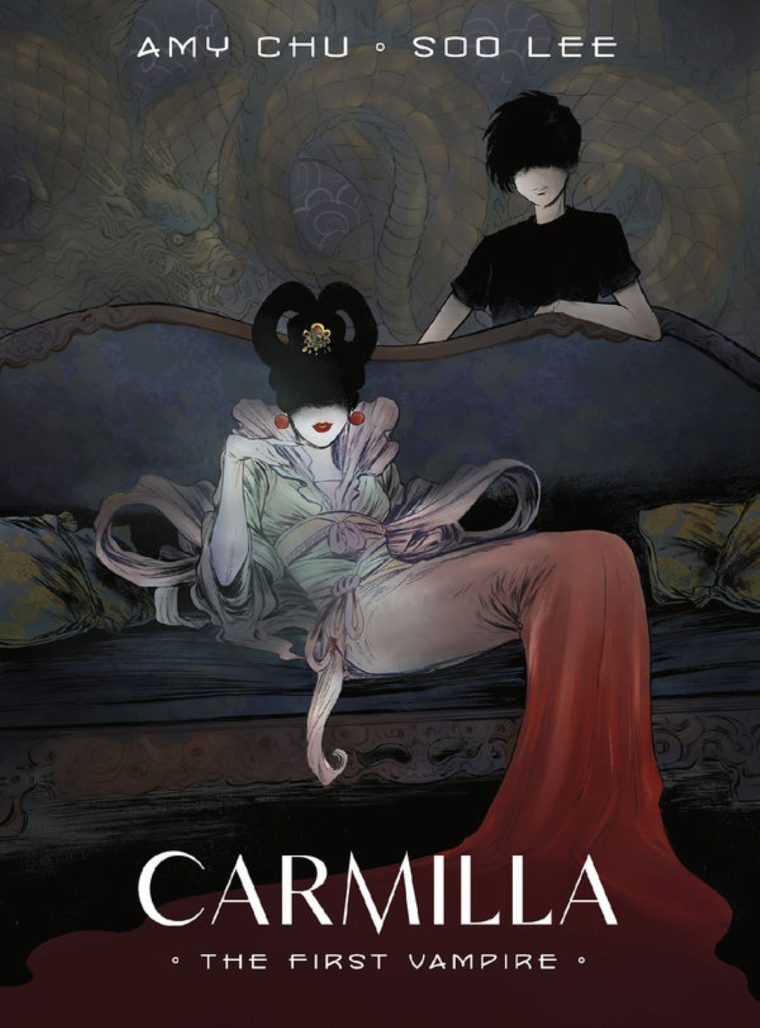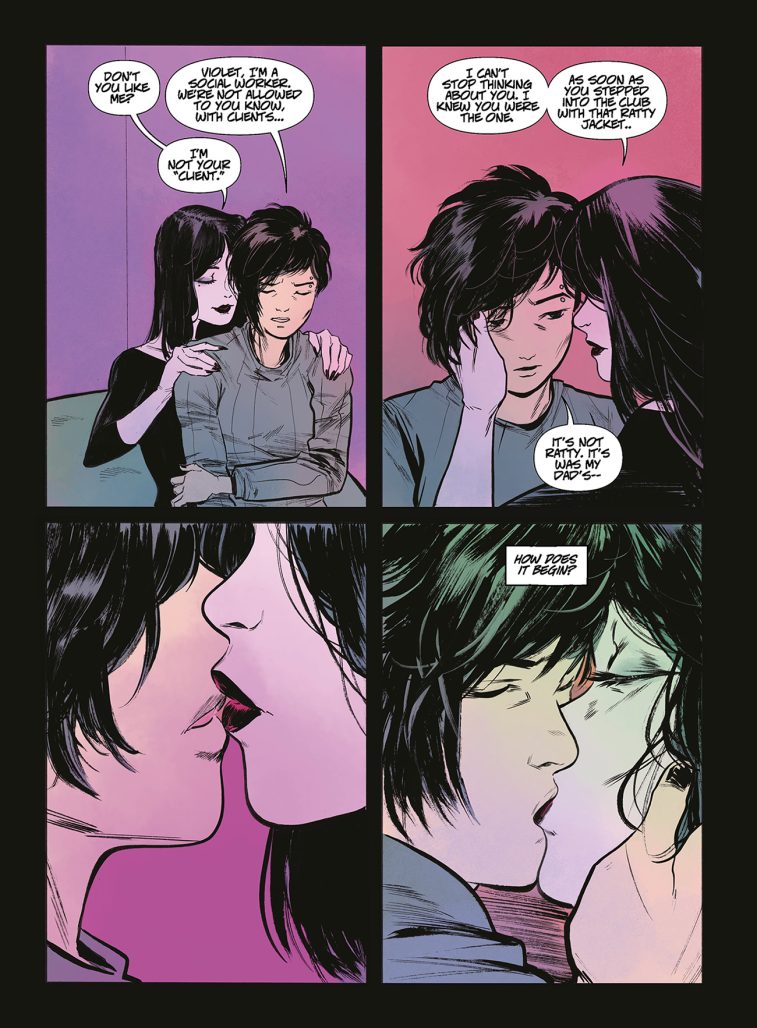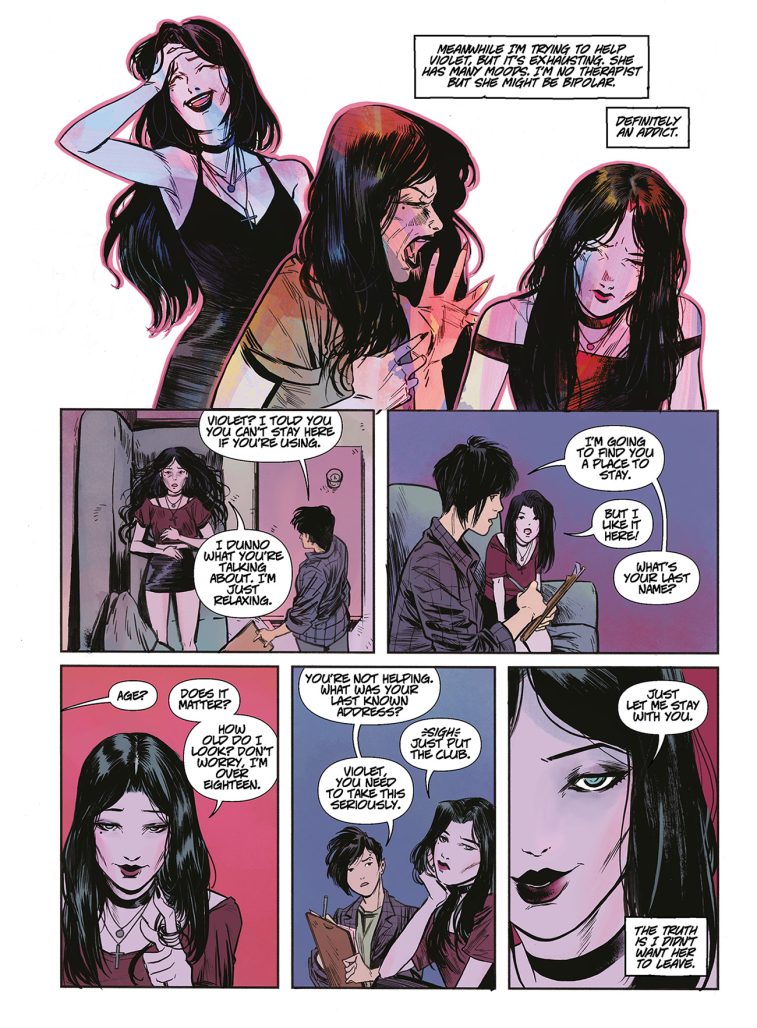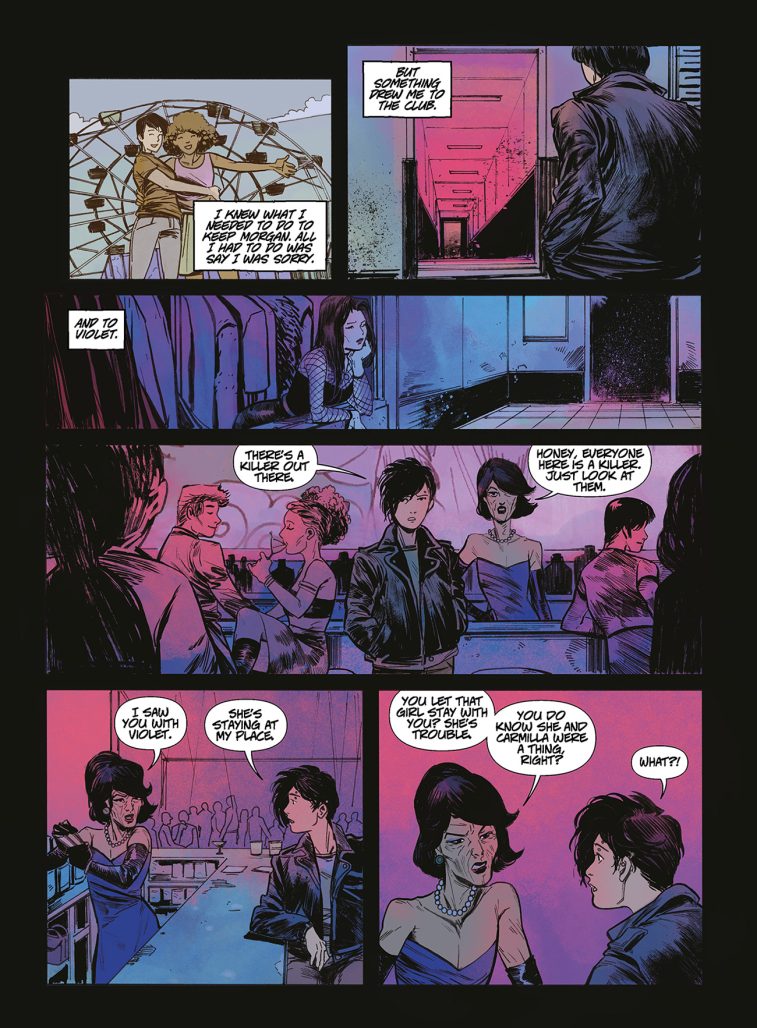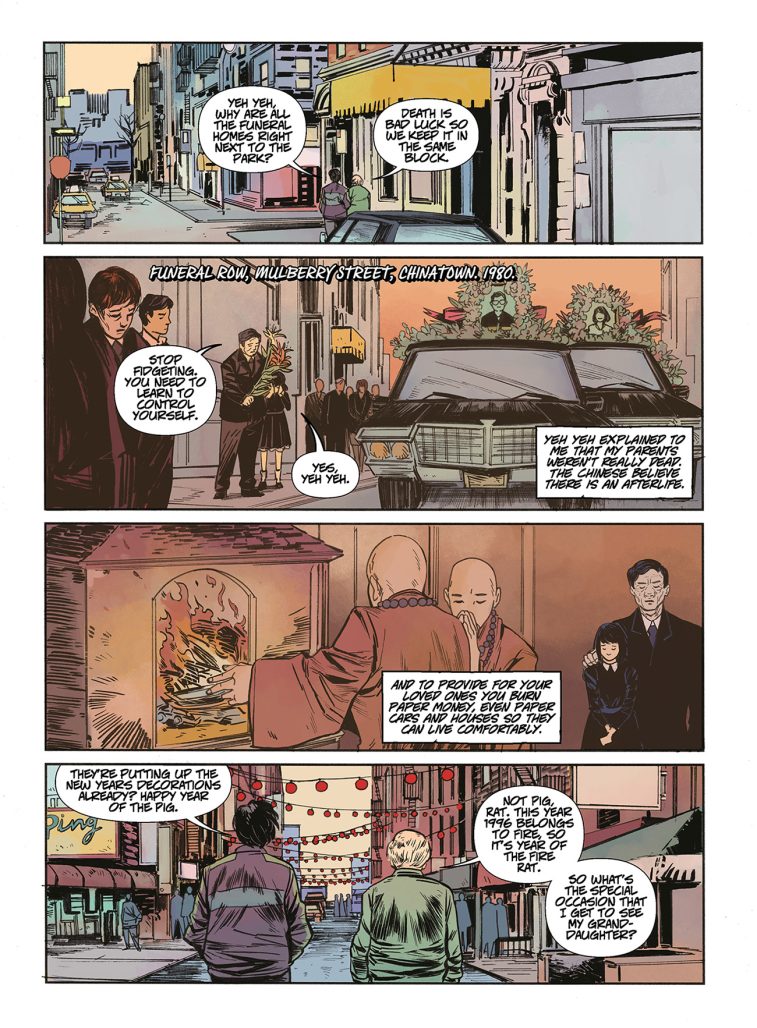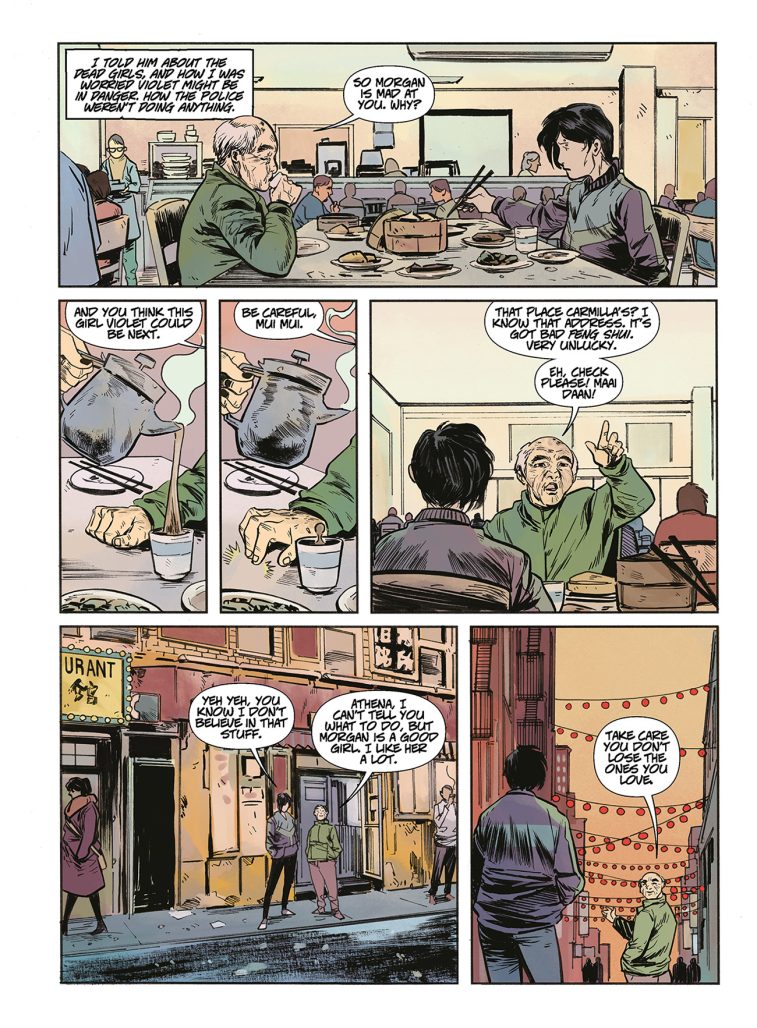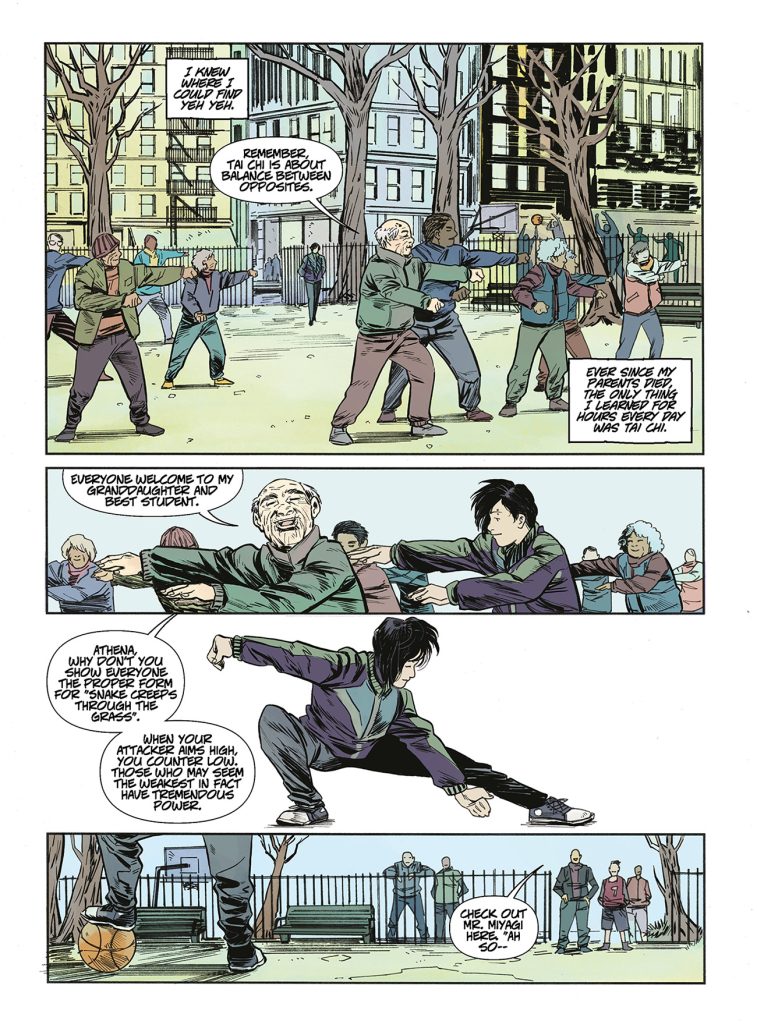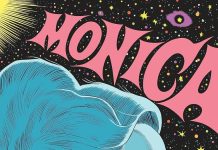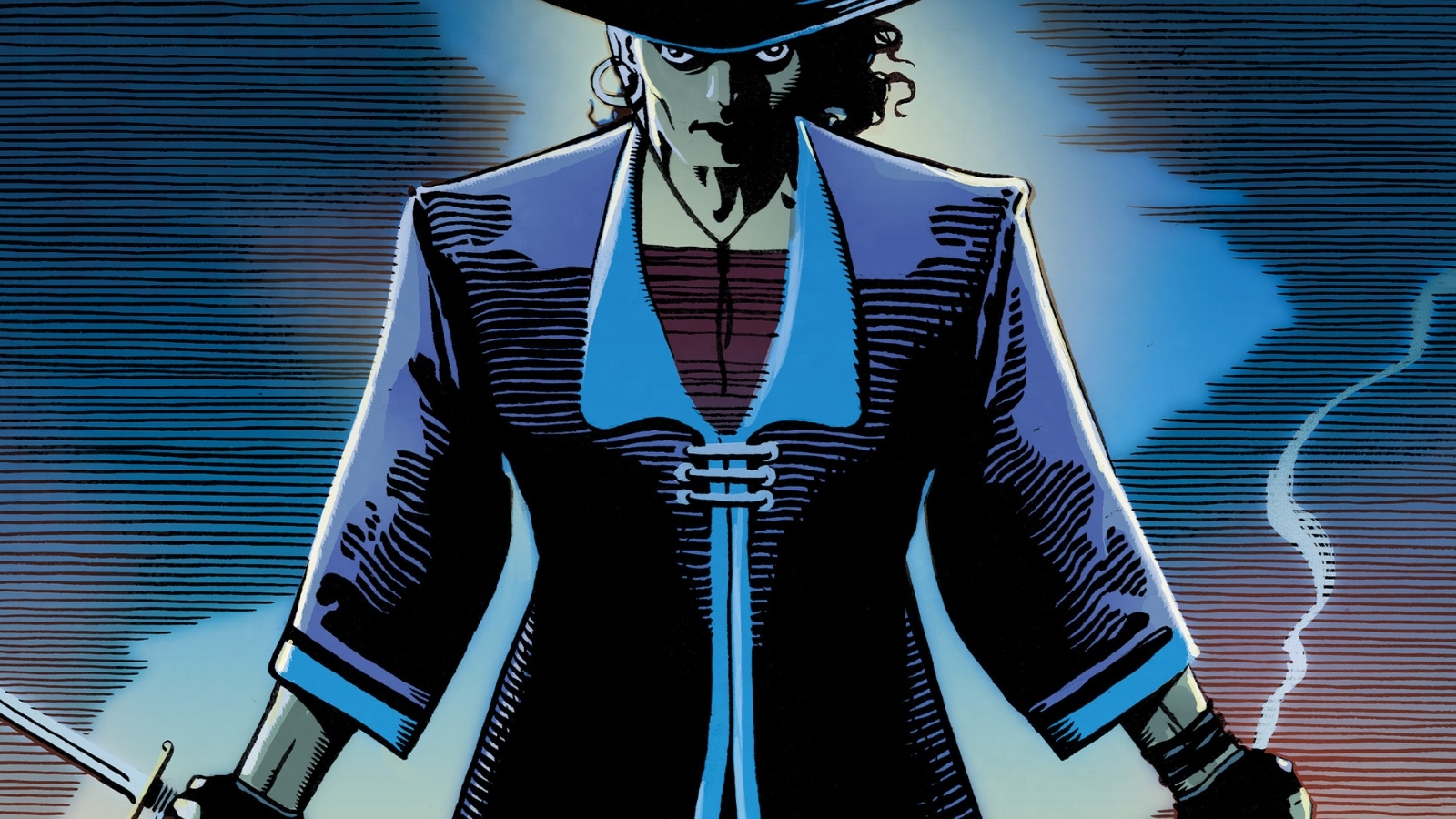It’s the 1990s. Something weird is happening in New York’s Chinatown: young, homeless, LGBTQ+ women are going missing and showing up dead and the police won’t lift a finger. Athena, a determined social worker, will stop at nothing to get to the bottom of it – and so ends up drawn into the mystery surrounding a figure called Carmilla.
First teased at SDCC ’22 and out in comic shops this week from Dark Horse’s Berger Books imprint, writer Amy Chu and artist Soo Lee‘s horror graphic novel Carmilla: The First Vampire draws inspiration from Sheridan Le Fanu‘s 1872 gothic novella Carmilla (an early work of vampire fiction pre-dating Bram Stoker‘s Dracula), adding an alternative twist to the classic gothic tale.
The Beat thrall Dean Simons talks to the two creators on the process behind the book, the original source material, the graphic novel’s characters and more.
DEAN SIMONS: Carmilla: The First Vampire is inspired by an 1872 novella – how did you first come across it and consider bringing it into the (relatively) modern era?
AMY CHU: Like most of us I grew up with Dracula and to a lesser degree Nosferatu, but completely unaware that a female vampire predated them both until I came across an article in Atlas Obscura. I found and read through the original Carmilla and was struck by how unabashedly queer it was. I knew if I were to do a vampire story this was the one.
SIMONS: How did you pitch it to Karen Berger?
CHU: I believe it was during lunch at San Diego Comic Con and I mentioned how Dracula was inspired by a Victorian lesbian vampire novella and it really took off from there.
SIMONS: Soo, what drew you to the project? Had you worked with Amy previously?
SOO LEE: When Karen came to me with the pitch, I was immediately drawn. I love horror and wanted to do more of it so it was perfect. I also loved that this story is heavily revolved around Asian Americans, I think Asian people need to have more representation in mainstream comics.
SIMONS: The story was pitched pre-pandemic and made during. How much did that period of time influence the writing, look and feel of the book?
CHU: Interesting question. This might be the darkest story I’ve written yet. 2020 was a fraught time especially in New York City where friends and relatives died of COVID, I think we all started thinking more about what life and life after death really means.
LEE: We had a little more wiggle room for art and so I got to take a little bit more time on the visuals.
SIMONS: The story is set in the New York City of the 1990s, particularly centred on the Chinatown district and the prevailing racist attitudes of the time are a running theme. How crucial was all of that to the pitch or did it emerge in the process of writing?
CHU: It wasn’t in the original pitch but COVID really fuelled a racist backlash against Chinese Americans and other Asians so I did feel the need to explore this in the book. Racism is a running theme throughout American history. My grandfather left the US because in the ’30s no one wanted a Chinese doctor.
SIMONS: Do you both recall that period well?
CHU: Oh, I absolutely remember New York City in the ’90s. I lived in a walkup in Hell’s Kitchen at the time, pre-gentrification. The scent of summer garbage and stale urine are embedded in my psyche.
LEE: I do! I grew up and have lived in New York City all my life.
SIMONS: Amy, in the afterward of the book you mention your own familiarity with New York’s Chinatown in the 1990s, how much has it changed in that time? How radically different would setting the story in today’s Chinatown have been?
CHU: Some things remain the same, but the demographics have changed and the dialects you hear on the street are different. Much of the original bachelor society represented by Athena’s grandfather is gone. Immigration now comes from different parts of China. I could have set the story today but the real problem is technology and the prevalence of cell phones would change the story. It’s hard to do creepy mystery when everyone is putting everything on TikTok…
SIMONS: Soo, how much research was involved in getting the look and feel of that time right 30 years on? Did you need to head out into the field to sketch and hit the library archives or was everything you needed available online?
LEE: I looked everything up as much as I could. I couldn’t go to the libraries or go outside because of the Pandemic but I looked at a lot of old black and white photos from the 80’s-90’s. The 90’s is such a very specific time as well where it melts into the looks of the 2000’s so that was also very helpful to look at things during that time period.
SIMONS: One interesting aspect of the book is that it places a heavy emphasis on Athena’s own relationships with others. Was this always planned or did it emerge in the writing?
CHU: The characters were all definitely planned, but like all relationships, they did change over the course of time and multiple rewrites.
SIMONS: Athena has a strong relationship with her grandfather. Was it inspired by your own personal relationships?
CHU: It’s a relationship I wish I had. I was born in Boston and raised mostly in the Midwest. My maternal grandfather died in Hong Kong when I was a little girl and was not even 50. My paternal grandfather grew up in the US and had a deep love for comics but moved back to China. I would only see him once every few years. There are elements of Yeh Yeh’s American-ness, his love for baseball for example, that are inspired by him.
LEE: I am very close to my family so it was easy to be in Athena’s shoes when drawing these scenes of them together.
SIMONS: The concept of the goeng-si/jiāngshī as it is used in the story is pretty cool and a departure from the common image associated with the creature. How did you figure out the best way to modernise the idea? Do you both have memories of stories and movies involving this mythical monster growing up? Any you can recommend for the uninitiated and curious?
CHU: The blood sucking vampire we all know is very much rooted in European mythology, but vampires are very much a global phenomenon. and some of these creatures are quite terrifying, like the Filipino manananggal. I personally found the hopping Chinese vampires silly but I have friends who grew up in New York City Chinatown who feel otherwise.If you want to learn more about the jianshi (or geungsi in Cantonese) start with the campy 1985 Mr. Vampire and graduate to the more modern Rigor Mortis from 2013.
LEE: I grew up watching Asian horror movies and most of the ones including Jiangshi that I’ve watched, have been comedic. When Amy brought them up, I immediately knew what they were. But for this, for the cover especially, I wanted to give a different ethereal and a very Asian look and style for Carmilla.
SIMONS: Carmilla ends with the impression that this is potentially the beginning of a longer tale. Will Athena return? Can you tease where things could go in future with her story?
CHU: Lol, of course I have mapped out a much larger epic story to tell! All I can say is I’m having another lunch with Karen Berger and Soo is on board to keep drawing, so stay tuned…
LEE: I won’t spoil anything but I recently went to the referenced place and it is the perfect setting. I immediately fell in love with it.
Carmilla: The First Vampire releases January 11 from all good comic shops, and arrives in bookstores on January 24.


